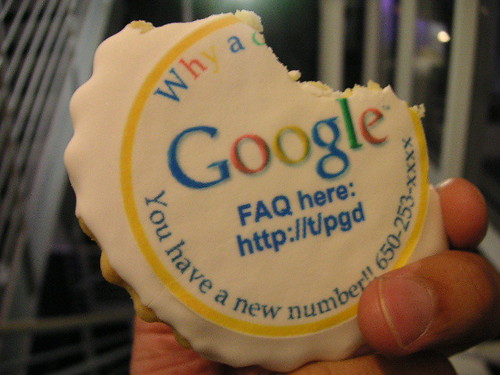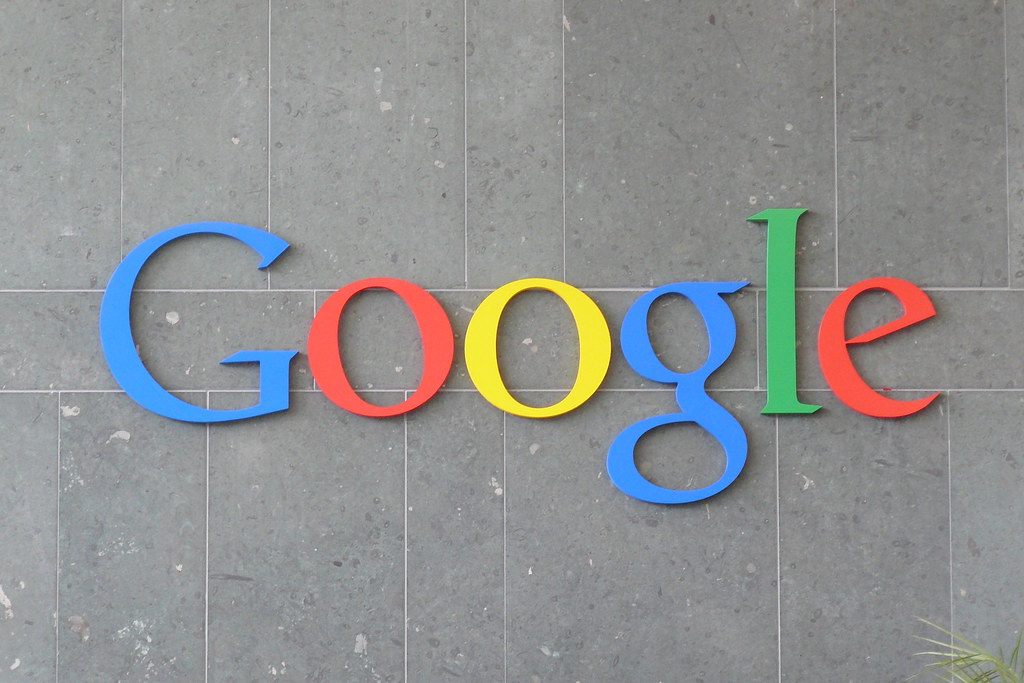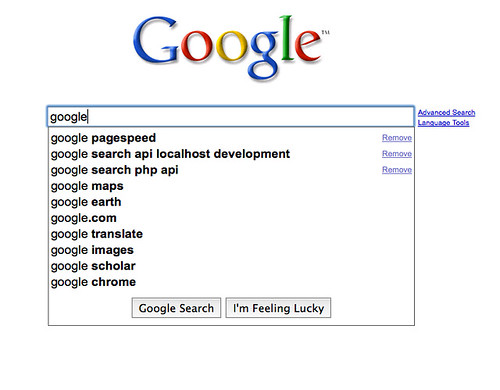
Alright, car fanatics, tech geeks, and anyone who’s ever grumbled at an algorithm, buckle up! We all know Google. It’s the “most powerful company in the world” according to the BBC, one of the planet’s most valuable brands, and frankly, it probably knows more about your daily habits than your own mother. From the omnipresent Google Search to Android in your pocket and YouTube in your living room, they’re practically the digital air we breathe.
But let’s be real. Even the titans of tech, the companies that seem to have a Midas touch with data and digital services, aren’t immune to a spectacular face-plant now and then. In fact, sometimes their grand visions turn into absolute head-scratchers, or worse, full-blown PR nightmares that make you wonder if anyone in Mountain View actually talks to real people. Forget graceful exits; we’re talking about products that bombed harder than a budget car commercial and policies that sparked global walk-outs.
So, put away your rose-tinted Chrome extensions, because we’re taking a joyride through some of Google’s most epic flops and eyebrow-raising controversies. This isn’t just a list of “things that didn’t quite work out”; this is a deep dive into the moments when Google, despite all its brainpower and billions, proved it’s very much capable of hitting a pothole, or, you know, building a whole new highway to nowhere. Let’s peel back the layers on these tech tales, shall we?

1. **Google Stadia’s Fall**Remember when Google decided it was going to revolutionize gaming? Ah, Stadia, the cloud gaming platform launched in March 2019, promising to let you play AAA titles anywhere without a console. The dream was simple: stream your games, no downloads, no updates, just pure, unadulterated gaming bliss. What could possibly go wrong when a company with Google’s immense resources tackles a new frontier? Turns out, quite a bit, as this platform eventually became one of the “discontinued Google products.”
The initial hype was palpable, fueled by the sheer ambition of the project. Google, a company running 11 data centers around the world with several thousand servers in each, surely had the infrastructure to deliver on this promise. They even invested heavily, reportedly spending “tens of millions of dollars” on getting major publishers like Ubisoft and Take-Two to bring their biggest games to Stadia, securing titles like Ubisoft ports, which Google reportedly paid $20 million for. This wasn’t just a side project; this was a significant financial commitment to a new ecosystem.
Despite the investment, Stadia never quite captured the hearts or wallets of the mainstream gaming community. Its abrupt shutdown left many early adopters feeling burned, a stark reminder that even a tech behemoth can struggle to penetrate established markets. Gaming proved to be a harder boss fight than anticipated for a company otherwise dominant in “email services, office suites, online video platforms,” and “AI virtual assistants.” It showed that having immense technological capabilities doesn’t automatically guarantee success in every venture.

2. **Google Glass’s Misadventure**Before smartwatches became ubiquitous, Google was trying to put tech directly on our faces. Google Glass, introduced in 2013, was a visionary, albeit somewhat clunky, pair of smart glasses. It promised to overlay digital information onto the real world, hands-free, providing notifications, navigation, and even photo and video capture with a simple voice command. It was cutting-edge, futuristic, and in hindsight, perhaps a little too far ahead of its time, or at least, too poorly executed for its era.
The device generated immense buzz, but quickly ran into a wall of practical and social issues. While the context simply lists “Glass” among the “discontinued Google products,” its story is far more complex. Early adopters, often dubbed “Glassholes,” faced public scrutiny and even outright hostility from those concerned about privacy. Imagine trying to have a casual conversation with someone wearing a tiny camera on their face, constantly wondering if you’re being recorded. It wasn’t exactly a recipe for social harmony, and the high price tag certainly didn’t help its mass adoption appeal.
From a design perspective, while innovative, Glass screamed “early prototype” rather than “fashion accessory,” clashing with the casual, relatable vibe Google usually aims for. It became a symbol of tech excess and privacy intrusion for many, rather than the liberating information tool it was intended to be. Eventually, Google shifted Glass from a consumer product to an “Enterprise Edition,” focusing on industrial and professional applications. This pragmatic pivot marked the end of Glass’s consumer dream, standing as a testament to Google’s willingness to experiment wildly, but also its capacity to misjudge societal readiness and practical user experience.

3. **The Google+ Debacle**Ah, Google+. The social network that was supposed to take on Facebook, uniting all of Google’s services under one grand social umbrella. Launched in 2011, it was an ambitious attempt by the search giant to crack the notoriously difficult social media market, a space where many have tried and few have truly succeeded against the established titans. Google, with its billions of users across Search, Gmail, and YouTube, surely had the inherent network effect to make this work, right? Well, if only it were that simple.
The idea behind Google+ wasn’t entirely flawed. It introduced “Circles” for better privacy control over who saw what, a concept that was genuinely innovative compared to Facebook’s often convoluted privacy settings. It also tried to integrate with other Google products, aiming to create a cohesive social layer across everything you did online. For a company focused on “online advertising” and “information technology,” understanding user connections seemed like a logical next step to further integrate its ecosystem and compete with other “Big Tech” players like Meta.
However, Google+ struggled from the start to find its unique identity and attract a truly engaged user base. Despite Google’s efforts to push it, sometimes quite aggressively, by linking it to other services, it never quite clicked. It became a bit of a ghost town for many, a place where you might have an account but rarely visited. The context blandly lists “Google+” among the “discontinued Google products,” a concise obituary for a project that consumed vast resources. Ultimately, the consumer version officially closed in April 2019. The Google+ story is a stark reminder that even the most powerful companies can’t just mandate social interaction; it takes organic growth and a genuine connection with users.
Read more about: The 13 Most Expensive Mistakes Made by Major Tech Companies in the Last Decade: Lessons for Every Business

4. **Inbox by Gmail’s Demise**Sometimes, Google launches a product that’s genuinely good, even beloved by a dedicated subset of users, only to pull the plug anyway. Enter Inbox by Gmail, an experimental email application launched in 2014, designed to rethink the inbox experience. It was Google’s attempt to make email less of a chore and more of a helpful assistant, bundling similar messages, highlighting key information, and even suggesting smart replies. For many, it was a revelation, a breath of fresh air in the often-stale world of email management.
Inbox was far more than just a skin over Gmail. It introduced features like “Bundles” for grouping similar emails (e.g., purchases, promotions, travel), “Reminders” integrated directly into your inbox, and the ability to “Snooze” emails to deal with them later. These were genuinely innovative approaches to managing the overwhelming flow of digital communication. For a company that offers “Gmail for email” and “Google Workspace” for productivity, Inbox represented a forward-thinking vision for how email *could* be, rather than just how it had always been, living up to Google’s reputation for “information technology” innovation.
However, despite its cult following and numerous productivity features, Google announced in 2018 that Inbox would be discontinued in March 2019, encouraging users to switch back to the main Gmail app. The stated reason was to streamline development and focus on a single email product. This move left many loyal users scratching their heads and expressing considerable disappointment, a classic “Google giveth, and Google taketh away” moment. While many of Inbox’s best features eventually found their way into regular Gmail, the dedicated, unique experience of Inbox was lost, ending up on the digital scrap heap.

5. **Project Dragonfly’s Controversy**Now, let’s pivot from product misfires to something far more contentious: ethical dilemmas and internal strife. Project Dragonfly was Google’s codename for a censored search engine prototype designed for the Chinese market. The existence of this project came to light between 2018 and 2019, igniting a firestorm of criticism both internally and externally. For a company whose original mission was “to organize the world’s information and make it universally accessible and useful,” the idea of a censored search engine felt like a direct contradiction of its foundational principles.
The project aimed to filter out content deemed sensitive by the Chinese government, including information about human rights, democracy, and religion. This move was seen by many, including numerous Google employees, as a betrayal of the company’s stated values. The context explicitly mentions that “tensions between the company’s leadership and its workers escalated as staff protested company decisions on… Dragonfly, a censored Chinese search engine.” Thousands of employees signed petitions and engaged in protests, arguing it raised severe human rights concerns and would set a dangerous precedent, challenging leadership on core ethical questions.
While Google eventually stated that it had “no plans” to launch a censored search engine in China, the mere existence and development of Project Dragonfly caused significant damage to Google’s reputation. It raised uncomfortable questions about how far the company would go for “revenue growth” and whether its corporate ethics could be compromised for market access. This incident serves as a stark example of how a company’s pursuit of new markets can collide head-on with its proclaimed values, leading to a profound public and internal reckoning.

6. **Project Maven’s Backlash**Speaking of controversial projects that stirred up significant internal dissent, let’s talk about Project Maven. This initiative involved Google working with the U.S. Department of Defense on an artificial intelligence program that would analyze drone footage to identify objects. While presented as a way to assist in non-offensive military operations, the involvement of a tech company like Google in military AI, particularly for surveillance applications, triggered a massive ethical debate among its employees.
For many within Google, the idea of their cutting-edge AI technology being used to enhance military operations, even indirectly, was a bridge too far. The company, known for its “artificial intelligence (AI)” research, found itself in a difficult position. The context explicitly notes that “tensions between the company’s leadership and its workers escalated as staff protested company decisions on… Project Maven, a military drone artificial intelligence, which had been seen as areas of revenue growth for the company.” This highlighted a clear disconnect between the company’s financial ambitions and the moral qualms of its workforce.
The protests were not just symbolic; they led to resignations and open letters from employees who felt the company was violating its informal motto, “Don’t be evil,” which was once a cornerstone of its corporate philosophy. They argued that contributing to military AI crossed an ethical line and risked weaponizing artificial intelligence. Ultimately, Google decided not to renew its contract with the Pentagon for Project Maven after it expired in 2019, largely due to this immense internal and external pressure. Project Maven underscored the challenge for tech giants in balancing potential “revenue growth” from government contracts with maintaining employee morale and adhering to a perceived moral code.

7. **James Damore’s Memo and Google’s “Echo Chamber”**Alright, so if you thought Google’s product graveyard was a hot mess, just wait until we talk about the internal fires that have raged within the Googleplex itself. Remember August 2017? That’s when a Google employee, James Damore, decided it was a good idea to circulate a memo arguing that biological factors, not just discrimination, played a role in women being less interested in technical roles. He called out “Google’s Ideological Echo Chamber” for blinding them to these realities. As you can imagine, this little internal document didn’t exactly fly under the radar, even though it was meant to be a discussion point.
This wasn’t just some casual watercooler chat getting out of hand; this was an employee challenging the very core of Google’s diversity and inclusion initiatives. The memo, intended for an internal audience, quickly became a public spectacle, igniting a massive debate about free speech, corporate culture, and the thorny intersection of biology and workplace equity. For a company that often prides itself on its progressive image and forward-thinking ethos, this was a serious wrench thrown into the gears, forcing a very uncomfortable conversation into the open.
Google CEO Sundar Pichai wasn’t having any of it. He swiftly accused Damore of “advancing harmful gender stereotypes in our workplace,” and just like that, Damore was out the door. Fired on the same day the memo became widely known. This move, while decisive, sparked further debate: did Google overreact, silencing a dissenting voice, or did it uphold its values by taking a stand against harmful rhetoric? It was a moment that underscored the increasing “tensions between the company’s leadership and its workers,” showing that even in Mountain View, not everyone always sings from the same hymn sheet.

8. **The Andy Rubin Scandal and Global Walkouts**Speaking of internal tensions, let’s talk about how Google handles allegations of ual misconduct. It’s not pretty. In October 2018, The New York Times dropped an absolute bombshell of an exposé titled, “How Google Protected Andy Rubin, the ‘Father of Android’.” The article detailed how Google allegedly shielded executives accused of sexual harassment, even paying out huge exit packages while keeping quiet about their misconduct. It was a stark contrast to the company’s official stance on workplace conduct and, frankly, made the whole “Don’t be evil” motto feel like a cruel joke.
The public outcry was immediate, and rightly so. This wasn’t just about one executive; it exposed what many saw as a systemic issue within Google. In response to the growing furor, Google’s leadership eventually announced that “48 employees have been fired over the last two years” for ual misconduct. While that might sound like decisive action, the perception was that these actions only came to light after external pressure and a highly damaging newspaper report. It left a bitter taste in the mouths of many, especially those who had suffered in silence.
The outrage culminated in one of the most powerful displays of employee activism in tech history. On November 1, 2018, more than 20,000 Google employees and contractors around the world staged a massive, global walk-out. They protested the company’s opaque handling of ual harassment complaints and demanded concrete changes. This wasn’t a bunch of disgruntled interns; these were the people who *make* Google work, and they had had enough. Even CEO Sundar Pichai was reportedly in support of the protests, a clear sign that the leadership understood the gravity of the situation, or at least the PR disaster unfolding. Later, some workers even accused the company of retaliating against these internal activists, suggesting that Google’s struggles with these deeply ethical dilemmas were far from over.

9. **The US Antitrust Hammer Drops**Alright, enough with the internal drama for a moment. Let’s talk about the big guns: the U.S. Department of Justice (DOJ) and their growing fascination with Google’s rather dominant market position. For years, critics have grumbled about Google’s sprawling empire, but in June 2019, the DOJ finally announced it would formally investigate Google for antitrust violations. You could practically hear the collective gasp from Silicon Valley. This wasn’t just a friendly chat; this was the government looking seriously at whether Google was playing fair.
The investigation wasn’t a quick affair, and it certainly wasn’t without merit in the eyes of regulators. It eventually led to a major antitrust lawsuit filed in October 2020. The core accusation? That Google had flagrantly “abused a monopoly position in the search and search advertising markets.” Think about it: when you want to find something online, where do you go? For most, it’s Google. And when you want to advertise, Google is often the first, second, and third stop. The lawsuit argued this wasn’t just good business; it was an illegal stranglehold on vital digital arteries.
This legal battle has been a long, drawn-out affair, a true marathon of legal wrangling. Fast forward to August 2024, and Google *lost* a lower court lawsuit, which had started back in 2020, as it was indeed found that the company “had an illegal monopoly over Internet search.” D.C. Circuit Court Judge Amit Mehta, not pulling any punches, held that this monopoly was a direct violation of Section 2 of the Sherman Act. This wasn’t just a slap on the wrist; this was a fundamental challenge to Google’s business model and a clear signal that the days of unchecked dominance might be drawing to a close.

10. **Project Bernanke: The Secret Ad Bidding Advantage**If you thought the antitrust lawsuits were all about Google’s general dominance, buckle up, because “Project Bernanke” is where things get truly scandalous, revealing the nitty-gritty of alleged unfair practices. In April 2021, The Wall Street Journal dropped another truth bomb, reporting that Google had been running a secret, years-long program internally codenamed “Project Bernanke.” And no, it wasn’t named after a former Federal Reserve chairman for good economic policy; it was about allegedly manipulating the online advertising market to Google’s benefit.
The report, which came out during the antitrust lawsuit filed by ten U.S. states against Google, detailed how Project Bernanke supposedly used data from *past* advertising bids to gain an unfair advantage over competing ad services. Imagine playing poker, but one player secretly knows what cards were played in previous rounds and uses that information to optimize their current hand. That’s essentially what was being alleged here, a clandestine operation designed to give Google an edge in its incredibly lucrative online advertising business, which, let’s not forget, makes up the vast majority of its revenue.
This revelation painted a picture of a company not just competing, but actively stacking the deck. It went beyond simply having the best technology or the biggest reach; it was about leveraging proprietary data in a way that critics argued was anti-competitive and harmful to publishers, advertisers, and even consumers. The scandal highlighted the darker side of data utilization and fueled the arguments that Google’s unchecked power was leading to market abuse, proving that sometimes, the biggest struggles aren’t just grand product visions, but the ethical quagmires lurking in the details of their money-making operations.

11. **Europe’s Hammer: The EU’s €2.4 Billion Shopping Fine**While the U.S. has been grappling with Google’s search monopoly, our friends across the pond in Europe haven’t exactly been shy about taking on the tech giant either. The European Union has long been a thorn in Google’s side, and in September 2024, the Court of Justice of the European Union (EU), based in Luxembourg, delivered another major blow. They, too, found that Google held an illegal monopoly, but this time, the focus was specifically “with regards to its shopping search.” And guess what? Google “could not avoid paying a €2.4 billion fine.” Ouch.
This wasn’t some minor regulatory spat; this was the EU standing firm on its conviction that Google’s practices were stifling competition in a crucial area of online commerce. The EU Court of Justice minced no words, finding that Google’s “discriminatory” treatment of rival shopping searches was a clear violation of the Digital Markets Act. For years, complaints had mounted that Google was unfairly promoting its own shopping comparison service, Google Shopping, at the expense of smaller, independent competitors, essentially burying rivals in its search results.
The €2.4 billion fine is a hefty sum, certainly enough to make even a company as cash-rich as Google sit up and take notice. It’s a clear message from European regulators that market dominance does not grant a license to abuse that position. This ruling underscores a broader global trend of increased scrutiny on Big Tech, demonstrating that Google’s journey to maintain its vast empire is fraught with legal challenges from powerful jurisdictions determined to level the digital playing field. It shows that some battles are far from over, and Google’s strategic decisions continue to face intense pushback.

12. **The US Court Curbs Google’s Exclusive Deals**So, with all these antitrust lawsuits swirling around, you might be wondering what the actual outcome has been for Google. Well, in September 2025, we got some major clarity from federal judge Amit Mehta in the United States. While the ruling was a mixed bag – Google will *not* be required to divest its wildly popular Chrome browser or the ubiquitous Android operating system – it still delivered some significant body blows to Google’s business practices. This was a direct result of those antitrust battles finally reaching a critical juncture.
The court’s decision, though not forcing a breakup of Google’s core products, did include crucial restrictions. The ruling “barred Google from having exclusive contracts for Google Search, Chrome, Google Assistant and Gemini app products.” This is huge, meaning Google can no longer make deals that lock out competitors from pre-installing or making their search engines or apps default on devices. It’s a move designed to open up the ecosystem and give users and device manufacturers more choice, breaking down some of the walls Google had strategically built around its services.
Even more significantly, the court also “ruled Google must share search data with competitors.” Now *that’s* a game-changer. Imagine giving your rivals access to some of the secret sauce that makes your main product so powerful. This provision aims to enable smaller search engines to better compete by allowing them to learn from Google’s vast data troves, hopefully leading to more innovation and diverse options in the market. It’s a landmark decision that, while not dismantling Google, forces it to fundamentally alter how it plays the game, ensuring that its ongoing struggle with dominance and responsibility will define its future trajectory.
Well, there you have it, folks – a deep dive into the moments Google wished we’d all just, well, Googled something else. From ambitious product launches that belly-flopped harder than a summer intern trying a triple front flip, to the brutal realities of internal ethical dilemmas and monumental antitrust battles that threatened to reshape its very foundation, Google’s journey has been anything but a smooth ride down the information superhighway. These stories aren’t just footnotes in a corporate annual report; they’re vital lessons in the brutal world of tech, showing that even the most powerful companies on the planet can find themselves navigating choppy waters, reminding us that with great power, comes an even greater chance of a spectacular stumble. It’s a wild ride, and clearly, the Google story is still being written, controversies and all.




